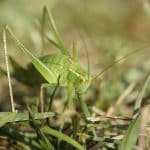The beauty of a garden goes beyond just the eye-catching flowers and perfectly trimmed hedges. The ground cover in your garden can make or break the overall aesthetic. If you are blessed with a shady garden, you might be wondering which ground covers are best suited for your plot. As a gardener, you might also be looking for low-maintenance options that don’t require too much of your time. This article will shed light on the best low-maintenance ground covers that thrive well in shady conditions. You will learn which plants and flowers are the best fit for your garden’s unique soil composition and exposure to sunlight.
Selecting the Right Ground Cover for Your Shady Garden
It is important to understand that not all ground covers are created equal. The first thing to consider when choosing a ground cover for your shady garden is the amount of shade it receives. A garden that gets full shade has less than three hours of direct sunlight each day, while a garden with partial shade gets three to six hours.
Also to see : How can you create a small-space-friendly vertical herb garden on your kitchen wall?
The type of soil in your garden is another critical factor. Do you have rich, loamy soil, or is it more sandy or clay-like? Understanding your soil type will help you choose a ground cover that will grow well and require less maintenance.
Next, consider exposure. Is your garden exposed to the harsh elements, or is it nestled in a more protected area? The more exposure, the hardier the ground cover needs to be.
This might interest you : How Can You Design a Cozy Outdoor Retreat with a Hammock and Fire Pit?
Finally, consider the climate of your area. Some ground covers are better suited for warm zones, while others thrive in cooler climates.
Low-Maintenance Ground Cover Options for Shady Gardens
There are numerous types of ground cover plants that are well suited to shady conditions. They each provide a different aesthetic and have varying levels of maintenance needs.
A great option for an evergreen, low-maintenance ground cover is the Creeping Juniper. This perennial plant is drought-resistant and grows well in zones three to nine. It has silvery-blue foliage and prefers full to partial shade.
Another excellent option is Japanese Pachysandra. This ground cover is perfect for shady gardens with rich, well-drained soil. It’s a low-growing plant that boasts glossy, jade green leaves, creating a lush carpet of foliage in your garden.
Then there’s Vinca Minor, also known as Periwinkle. This creep plant is an aggressive ground cover that thrives in partial to full shade. Its charming blue-violet flowers add a pop of color in early spring.
Cultivating Your Ground Cover
Once you’ve selected your ground cover, it’s time to get it in the ground. Most ground covers are best planted in the spring to give them ample time to establish before the heat of the summer or the chill of winter.
Prepare the soil by clearing it of any weeds and adding compost or a slow-release fertilizer. Depending on the type of ground cover you’ve chosen, you might need to amend the soil to ensure it has the right pH balance and nutrients.
Once your soil is ready, plant the ground cover according to the recommended spacing for that specific plant. Then water well and continue to maintain as needed.
Maintaining Your Ground Cover
Even the most low-maintenance ground covers require some care. Regular watering, especially during dry periods, will keep your ground cover healthy and vibrant.
Mulching around your ground covers can help retain moisture and suppress weeds. Just be careful not to mulch too heavily, as this can create a wet environment that encourages disease and rot.
Periodically check your ground covers for pests and diseases. If detected early, most issues can be resolved without much trouble.
Take the time to prune and trim your ground covers. This will keep them looking tidy and can also help prevent the spread of disease.
Wrapping Up
Choosing the right ground cover for your shady garden can significantly enhance its beauty while also reducing maintenance needs. Whether you opt for the evergreen Creeping Juniper, the lush Japanese Pachysandra, or the charming Vinca Minor, you’ll add a layer of beauty to your garden that’s sure to be admired. Remember, the key is to choose a ground cover that suits your garden’s specific conditions and your personal gardening style.
Follow the steps outlined in this article to cultivate and maintain your chosen ground cover effectively. With a bit of effort and care, you’ll be proud of your lush, vibrant, and low-maintenance shady garden.
Adjusting Your Ground Cover to Your Garden’s Conditions
Selecting a ground cover that aligns well with your garden’s unique conditions can significantly reduce maintenance efforts. Understanding the specific characteristics of your garden such as its sun exposure, zone, soil type, and the climate will play a crucial role in informing your ground cover options.
A crucial factor to consider when selecting your ground cover is the amount of sun your garden receives. Gardens with full shade receive less than three hours of direct sunlight each day, and gardens with partial shade receive three to six hours. The level of shade your garden receives will determine the type of ground cover that will flourish best.
Considering your garden’s specific zone is also essential. This refers to the hardiness level of your garden – how it withstands varying weather conditions. Some ground covers are more suited for warmer climates, while others thrive in cooler ones.
Understanding your soil type is key. Do you have moist, well-drained soil or is it more sandy or clay-like? This understanding will help you select a ground cover that will grow well in these conditions.
Lastly, your garden’s exposure to the elements will determine the hardiness of the ground cover necessary. The more exposed your garden is, the more robust the ground cover should be.
Low-Maintenance Ground Cover for Shady Gardens: A Closer Look
If you’re wondering which ground covers are best for a shady garden, several options thrive in these conditions.
Creeping Juniper is an impressive evergreen option. This perennial plant is drought-tolerant and flourishes in hardiness zones three to nine. It has a silvery-blue foliage that makes it visually appealing. This low-maintenance gem prefers full to partial shade.
Japanese Pachysandra is also an excellent choice. It’s perfect for shady gardens with rich, well-drained soil. It’s a low-growing plant with glossy, jade green leaves that create a lush carpet of foliage in your garden.
Lastly, Vinca Minor or Periwinkle, is an assertive ground cover that thrives in partial to full shade. Its blue-violet flowers bloom in early spring, adding a pop of color to your garden.
In Conclusion
Choosing the right ground cover for your shady garden can be a game-changer. It can significantly enhance the aesthetic of your garden while effectively reducing maintenance needs. If you want an evergreen option, go for Creeping Juniper. If a lush carpet of green is your preference, opt for Japanese Pachysandra. For a pop of color, go for Vinca Minor.
Remember, choosing the right ground cover for your garden involves understanding your garden’s specific conditions — including its sun exposure, zone, soil type, and exposure to the elements.
Cultivate and maintain your chosen ground cover effectively by following the steps outlined in this article. With a little bit of effort and care, you can transform your garden into a lush, vibrant, and low-maintenance haven.











